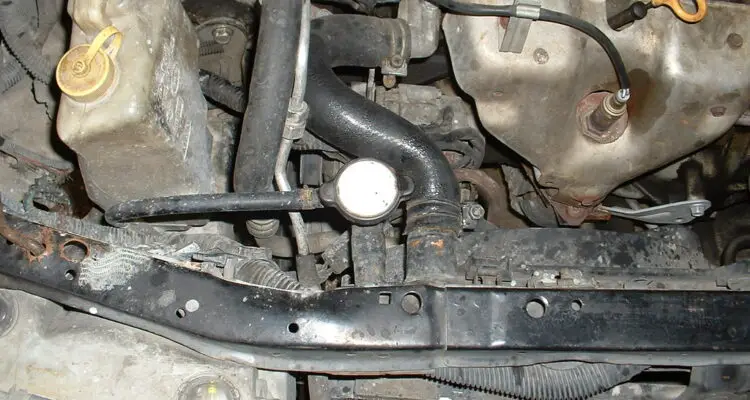If you’re new to the world of cars or an automotive enthusiast eager to delve into the intricacies of diagnosing and fixing cooling system problems, this guide is your gateway to understanding and addressing issues that might plague your vehicle’s performance. Your car’s cooling system plays a pivotal role in preventing engine overheating and ensuring optimal operation. In this article, we’ll break down the key indicators signaling the presence of air in your cooling system and provide practical solutions to tackle them head-on, and how to tell if air in cooling system.
Identifying the Telltale Signs of Air in Your Cooling System
Driving with an Overheated Engine: One of the most blatant signs of air trapped in your cooling system is an overheating engine. When air infiltrates the system, it interferes with accurate temperature sensing, preventing the fan and cooling mechanism from functioning correctly. If your temperature gauge seems erratic or displays abnormally high readings, chances are you’re dealing with a flawed system.
- Frosty Heater Woes: If your car’s heater is providing more chills than warmth, it’s a strong hint that air pockets have taken residence in your coolant system. Air bubbles hinder the circulation of hot fluid to the heater core, leading to a lack of heat from the vents even when the heater is activated.
- Gushing Noises from Within: Strange water-gushing sounds emanating from your car’s dashboard are often the result of air entrapment within the cooling system. As the engine starts, coolant flows through the heater core, producing this intriguing gurgling sound. Correcting this requires maintaining proper coolant levels and effectively releasing trapped air, sometimes through specialized valves.
- Overheating Post-Repairs: If your car’s cooling performance takes a nosedive after recent repairs, it’s a sign that something’s awry. Poorly executed radiator, water pump, or coolant hose repairs can lead to loose components or cracks, inadvertently allowing air to infiltrate the cooling system.
- Inconsistent Coolant Levels: Unpredictable fluctuations in coolant levels are often the result of air bubbles causing the coolant to overflow from the radiator cap. If you frequently find yourself refilling the coolant reservoir without any visible leaks, trapped air might be the unseen culprit.
- Wild Temperature Gauge Readings: A fully functional cooling system maintains a steady temperature gauge reading. The presence of trapped air can disrupt this harmony, causing the temperature gauge to exhibit erratic behavior or extreme readings, even shortly after starting the engine.
- Fuel Efficiency Takes a Hit: Remarkably, trapped air in your cooling system can impact your car’s fuel efficiency. An inefficient cooling system fails to adequately cool the engine, forcing it to work harder and consume more fuel. A sudden drop in fuel economy without an apparent cause should prompt an investigation into your cooling system’s condition.
- White Exhaust Smoke Drama: White smoke billowing from your exhaust is a red flag for a compromised cooling system. Poor coolant circulation due to air pockets can lead to engine overheating, ultimately causing the coolant to burn and emit white smoke. This situation demands immediate attention to avoid severe engine damage.
- Chilled Upper Radiator Hose: After your car warms up, both the upper and lower radiator hoses should radiate heat. If the upper hose remains cold while the lower one warms up, trapped air could be preventing hot coolant circulation through the upper hose.
- Coolant Overflow Show: Trapped air can build up pressure, pushing the coolant to overflow from the reservoir. If you find coolant spilling or bubbling from the reservoir, especially after a drive, air pockets are likely to blame.
- Visible Air Bubbles: Sometimes, you can literally witness air bubbles rising to the top of the radiator or reservoir upon starting the engine. This visual confirmation signals the presence of air in your cooling system.
Conquering Air Troubles in Your Cooling System
Routine Maintenance Matters: Staying vigilant and promptly addressing these symptoms is key. Regular maintenance and inspections can go a long way in preventing air pockets from forming.
- Cooling System Flushing: Flushing your cooling system helps eliminate debris, preventing corrosion and ensuring optimal performance. Experts disagree on the ideal interval, so consider factors like your vehicle’s age and the type of driving you do.
- Bleeding the Cooling System: Bleeding involves removing air pockets from the system. Utilize a bleeder valve if available or follow alternative methods based on your car’s specifications. Always ensure the engine is cool to avoid injury.
- Jack Stands for Comprehensive Air Removal: For a thorough air removal process, employ jack stands to position the radiator neck above the engine. Lift and cool the engine before allowing it to run and top up the coolant.
Persisting symptoms may indicate underlying issues best addressed by a professional mechanic. If air pockets remain despite your efforts, it’s possible you’re dealing with leaks or cracks that require expert attention.
In conclusion, recognizing air-related troubles in your cooling system is pivotal for maintaining engine efficiency and safety. With attentiveness and adherence to proper maintenance and bleeding procedures, you can ensure a smooth-running vehicle and prevent complications down the road. Remember, a well-maintained cooling system keeps your engine running smoothly, offering peace of mind and confident travels.







